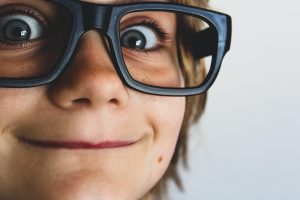“The eyes don’t lie.”
“The eyes are the windows to the soul.”
There are endless old adages about eyes, and so many are related to communication and what we perceive in others. That’s because eye communication is a real thing. Ever simply traded a look with someone close to you, and it spoke volumes even though not a word was uttered? There is a vast amount of communication to be exchanged by looking into someone else’s eyes. Humans can detect minute changes in another’s eye expressions, and this small form of body language communicates a wealth of information. It’s just biology – in a world where communication and socialization are important to survival and well-being, we have evolved to be able to communicate incredibly well using our eyes.
Those old adages were born from truth, and so just like the saying goes, “the eyes don’t lie.” Direct eye contact reveals our thoughts and feelings, and it has many purposes. It shows confidence, helps us to understand others more deeply, to bond more intensely by creating empathetic emotions, and allows us to communicate simultaneously during a conversation instead of having to wait for a turn to speak. Modern times have procured a proclivity for a more indirect form of communication – usually on our phones or computers – and now eye contact is seemingly in short supply. In an era of texting and social media, eye contact might feel nearly irrelevant as we’re all hiding behind the privacy of our screens. We are becoming less accustomed to looking into each other’s eyes to speak, and in-person interactions can degrade into an exercise of looking anywhere but into another person’s eyes. Awkward exchanges occur while passing other people in hallways or aisles, and eyes are averted to our phones instead. In reality, eye contact and a nod or a smile would have been a genuine way to say hello and establish a social connection.
Now, we are also in an era where wearing masks in public places is a completely normal thing to do. It’s impossible to look at someone else’s mouth while they are talking – if we want to find visual cues that reveal a person’s feelings or tone during a conversation, we are forced to look at their eyes. Are there crinkles surrounding them, displaying a person’s smile beneath his mask? Are they unfocused, betraying the fact that your colleague isn’t fully invested in the conversation? Are they heavy-lidded, showing how tired your friend is after enduring months of pandemic stress? Recently, my daughter had a well check that included getting shots at the end of the visit. I tried to prepare her for them, but she is still young and did not fully understand that I was telling her someone was purposefully going to do something that would cause her pain. She was wearing a mask, and all I could see of her sweet face were her bright, little eyes. I laid her back, the nurse gave her a shot, and immediately giant tears welled up and she stared at me with the most accusing, hurt expression in her eyes – Mommy, why did you let that happen to me? If I had been able to see her whole face, I might have missed all the things she was telling me with those eyes. But because I could only see her eyes, my empathetic understanding for her pain and feelings of betrayal were magnified, and it was a real gut punch.
The eyes have an incredible amount to say, and using this masked-up time to practice direct eye contact could help us re-learn just how much this small form of body language allows us to communicate.
Most importantly, practicing eye contact at home with our children helps us advance their social skills and especially establishes deeper connections with them. Looking into our children’s eyes is helpful for us as adults, too, because of those mirrored feelings of empathy we get when looking into another’s eyes. It’s easier to maintain our cool and experience feelings of love during tough parenting moments if we are looking our children directly in the eyes. Hopefully, our children will reciprocate this – the loving emotion they see in our eyes – and an awesome cycle of love and empathy are created. Whether idealistic or realistic, it never hurts to try our best to establish these kinds of connections, whether at home with our families, at work with our colleagues, or at the store with strangers. You never know who you’ll affect in a positive way by just using eye language.














